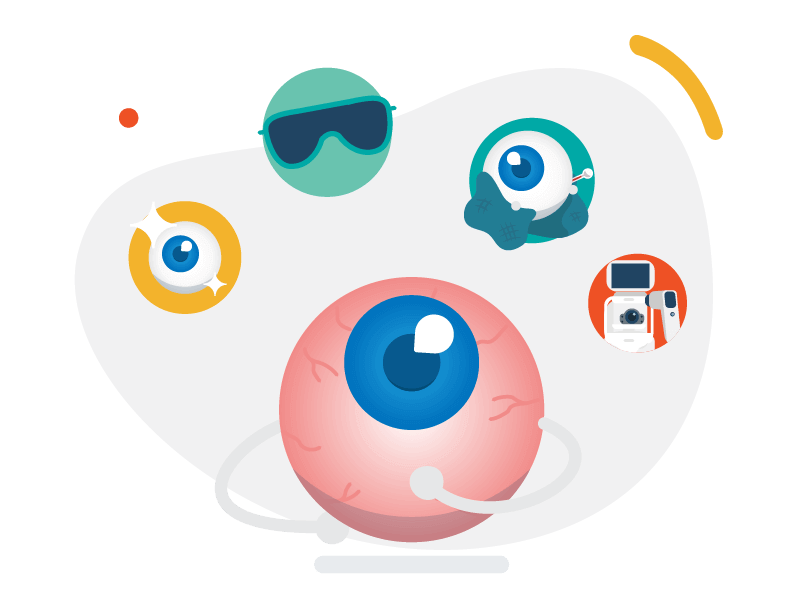Anatomy of the eye
Sclera: The white portion of the eye is known as the sclera. It's the white fibrous outer layer of the eyeball.
Extraocular muscles: Extraocular muscles are responsible for rotating and moving the eye. For example, the superior rectus muscle is a muscle in the orbit which is responsible for lifting our eyeball.
Cornea: The front part of our eye is called the cornea. This is the clear part of our eye, and this directs light to enter our eye and then land in the back portion of our eye.
Iris: Behind the cornea, there is the iris, and it is the pigmented portion of our eye. This is what gives us our eye color.
Lens: Directly behind the iris, the lens is visible. Our lenses are clear when we're younger, so light can pass through them and then bend and land in the back portion of our eyes. Eventually, as we age, the lens becomes more opacified, more yellow, and the proteins within the lens tend to coagulate. A cataract results from this. This results in a reduction in your vision as well because the light that enters it doesn't go through a clear structure anymore.
Retina: The back portion of our eye is called the retina. This is where all the light then ends up landing. Retina is responsible for detecting the light.
Optic nerve: Optic nerve is basically the cable that connects your eye to your brain. And it sends different messages to the brain, depending on what the eye sees and what lands on the retina.
Macula: Right near the optic nerve, there is a divot which is the macula. Macula is a small region and it aids in our sharp central vision. Macula is what's responsible for color vision as well as seeing central targets. In the event that someone may have macular degeneration, the macula is the part of the eye that's affected and it can result in central vision loss, in different distortions, difficulty recognising central targets such as faces.
Rods: Rods are light-sensitive detectors responsible for peripheral and night vision. Photoreceptors are made up of rods and cones.
Pupil: The pupil is the black part of the eye, which serves as a pathway for light to reach the retina.
Key terms for common eye conditions and disorders
Amblyopia: Sometimes called lazy eye, this condition occurs when the brain is unable to process certain signals from one of the eyes.
Astigmatism: Problems caused by a curvature in the eye. It can be corrected with corrective lenses.
Cataract: Cloudiness in the eye impairing vision over time. It can be treated surgically.
Hypertension: High blood pressure is a contributing factor to eye disorders because it damages blood vessels near the eye.
Myopia: Nearsightedness is another term for myopia.
Common terms for examinations, treatments, and procedures
Fundoscopy/Ophthalmoscope: A method of examining the retina thoroughly with an ophthalmoscope that enables a comprehensive view of the retina.
Slit Lamp: It enables a thorough examination of the eye using a high-intensity light. Often used during an eye exam to determine the overall health of the eyes.
Snellen Chart: A standard test for vision recognizable by the large E at the top.
Visual Acuity: The ability to recognize shapes and details. Many tests are available to measure it.












